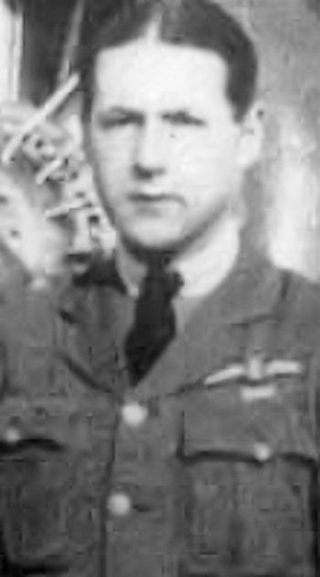Related Research Articles
Robert Kenneth Whitney DFC was a Canadian First World War flying ace, officially credited with 5 victories.
Captain John Victor Sorsoleil MC was a Canadian First World War flying ace, officially credited with 14 victories.

Air vice-marshal Sir Francis John Williamson Mellersh, was a Royal Naval Air Service aviator and flying ace credited with five aerial victories during the First World War, and a senior commander in the Royal Air Force during the 1940s and 1950s. He was killed in a helicopter accident in 1955.

Air Vice Marshal George Roberts Howsam, CB, MC was a Canadian First World War flying ace, officially credited with 13 victories. Serving in the newly formed Royal Canadian Air Force in the inter-war years, Howsam served as the RCAF's Director of Training during World War II.
Lieutenant Harold Byrn Hudson MC was a Canadian First World War flying ace, officially credited with 13 victories. As wingman to William George Barker, he scored a record five victories over observation balloons in a single day.
Captain Hazel LeRoy Wallace DFC was a Canadian First World War flying ace, officially credited with 14 victories. His record shows him to have been a notable team player in squadron tactics.
Lieutenant Harry Neville Compton was a World War I flying ace credited with five aerial victories.
Squadron Leader Charles John Wharton Darwin DSO RAF was a First World War flying ace credited with five aerial victories.
Lieutenant George William Gladstone Gauld was a World War I flying ace credited with five aerial victories.
Captain Joseph Eskel Hallonquist was a World War I flying ace credited with five aerial victories.
Lieutenant Ernest Lindup was a South African World War I flying ace credited with five aerial victories.
Lieutenant Harold Arthur Sydney Molyneux was a World War I flying ace credited with five aerial victories. During World War II, he returned to service in the Royal Canadian Air Force.
Air Commodore Redford Henry Mulock, was a Canadian aviator and flying ace. He was the first Canadian flying ace of the First World War and the first in the Royal Naval Air Service, achieving five aerial victories by May 1916.
Major Oliver Stewart MC AFC (1896-1976) was a World War I flying ace credited with five aerial victories. Post war, he had a long and distinguished career as a writer.

Lieutenant Hilbert Leigh Bair began his service career as a World War I flying ace credited with six aerial victories.
Captain Henry Gordon Clappison was a World War I flying ace credited with six aerial victories.
Captain Ronald Sykes (1899-1977) was a World War I flying ace credited with six aerial victories.

Lieutenant Kenneth Russell Unger was an American World War I flying ace credited with fourteen aerial victories. His candidacy rejected by his own nation, Unger applied to the British Royal Flying Corps for military pilot training in June 1917. Once trained, he was assigned to the Royal Naval Air Service (RNAS). As the RNAS was merged into the Royal Air Force, Unger scored his aerial victories between 26 June and 1 November 1918. In later life, Unger remained involved in aviation and served again during World War II. He also joined the U.S. Navy Reserves, rising to the rank of rear admiral.
Captain Eric John Stephens (1895-1967) was an Australian flying ace who served in the Royal Air Force. He was credited with 13 confirmed aerial victories. He later became a Qantas pilot.
References
- ↑ "William John Gillespie". www.theaerodrome.com. Retrieved 6 February 2010.
- ↑ Above the Trenches: A Complete Record of the Fighter Aces and Units of the British Empire Air Forces 1915-1920. p. 167.
- ↑ "William John Gillespie". www.theaerodrome.com. Retrieved 6 February 2010.